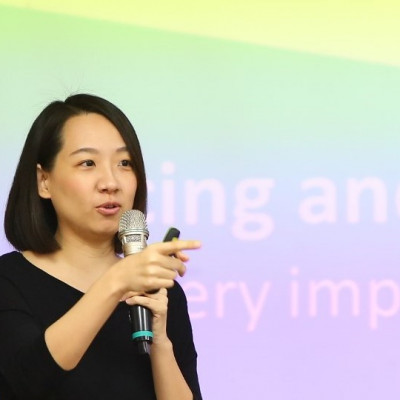Sessions / Assessment in CLIL
A preliminary study on developing bilingual classroom assessment #2524
The study draws upon a conceptual framework of the three assessment approaches (assessment of/for/as learning) and a five-phase cycle of bilingual classroom assessment that subsumes (1) planning assessment, (2) collecting and organizing assessment information, (3) interpreting assessment information and providing feedback, (4) evaluating and reporting assessment information, and (5) taking action on the assessment results. Within this framework, the purpose of the study is to develop five modules of bilingual classroom assessment across the bilingual curricular on the arts, the health and physical education areas, cross-area project, and the using English as a medium of instruction in the English subject (i.e., the EMI). By the design-based research approach, the study investigated how the bilingual classroom assessment practices were contextualized and developed with foci on the lesson planning, the instruction implementation, and post-lesson reflections from the teachers’ perspectives. Data-collection techniques included via interviews, lesson co-planning notes, lesson observation notes, students’ worksheets and assessments, and the teachers’ post-lesson reflections. Five secondary schools (4 junior high schools, 1 senior high school) and 7 teachers (3 English teachers, and 4 content area teachers) partook in the study. Preliminary findings revealed the five assessment modules that detail why, what, how, and so what of the assessment, alongside a succinct lesson plan of a unit (a range of 3 to 16 class periods). In terms of post-lesson reflections, content-area teachers emphasized the importance of aligning classroom participation and English learning targets with the assessment tasks, so as to facilitate the dual-focused learning of Grades 7 and 8 students in bilingual classrooms. In terms of EMI, English-subject teachers indicated a need to set fewer learning targets as well as to slower the instructional pacing, so as to guide the self-directed English learning of Grade 7 students. The study delineates the implications of bilingual classroom assessment.
Constructing Professional Competency Indicators for Content and Language Integrated Learning (CLIL) Teachers in Taiwan #2523
Originally from Europe, Content and Language Integrated Learning (CLIL) has been adopted as the mainstream bilingual education model for Taiwanese primary and secondary schools in recent years due to its dual content-and-language focus and the flexibility with which it can be adapted to local educational contexts.
In response to Taiwan’s “2030 Bilingual Nation” policy, the Language Training and Testing Center (LTTC) has been working closely with city education bureaus and university-affiliated bilingual education centers on the development of resources for CLIL teacher training and classroom assessment. To further align the center’s previous efforts and to fill the gap in CLIL-related research conducted so far in Taiwan, the LTTC initiated the present study. It encompassed document analysis, panel discussions, surveys and interviews to create a proposed set of professional competency indicators for local CLIL teachers.
In this presentation, we will provide a description of the professional competency indicators, covering how they are aligned with existing competency frameworks for CLIL teachers (e.g., Bertaux et al., 2010; Marsh et al., 2010), while at the same time supplemented by professional standards developed specifically for teachers in Taiwan (e.g., Chen 2014; Chung et al., 2012) as well as literature related to CLIL teacher professional development in other countries and regions (e.g., Lo, 2020; Rutgers et al., 2020). These indicators serve as a point of reference for discussions pertaining to CLIL teaching, teachers’ professional development, and related research in an EFL context such as Taiwan. Since they are meant to be of use in the Taiwanese context and to inform local teacher training, we will also elaborate on how the indicators address local needs to support learner-centered teaching and assessment practices.


